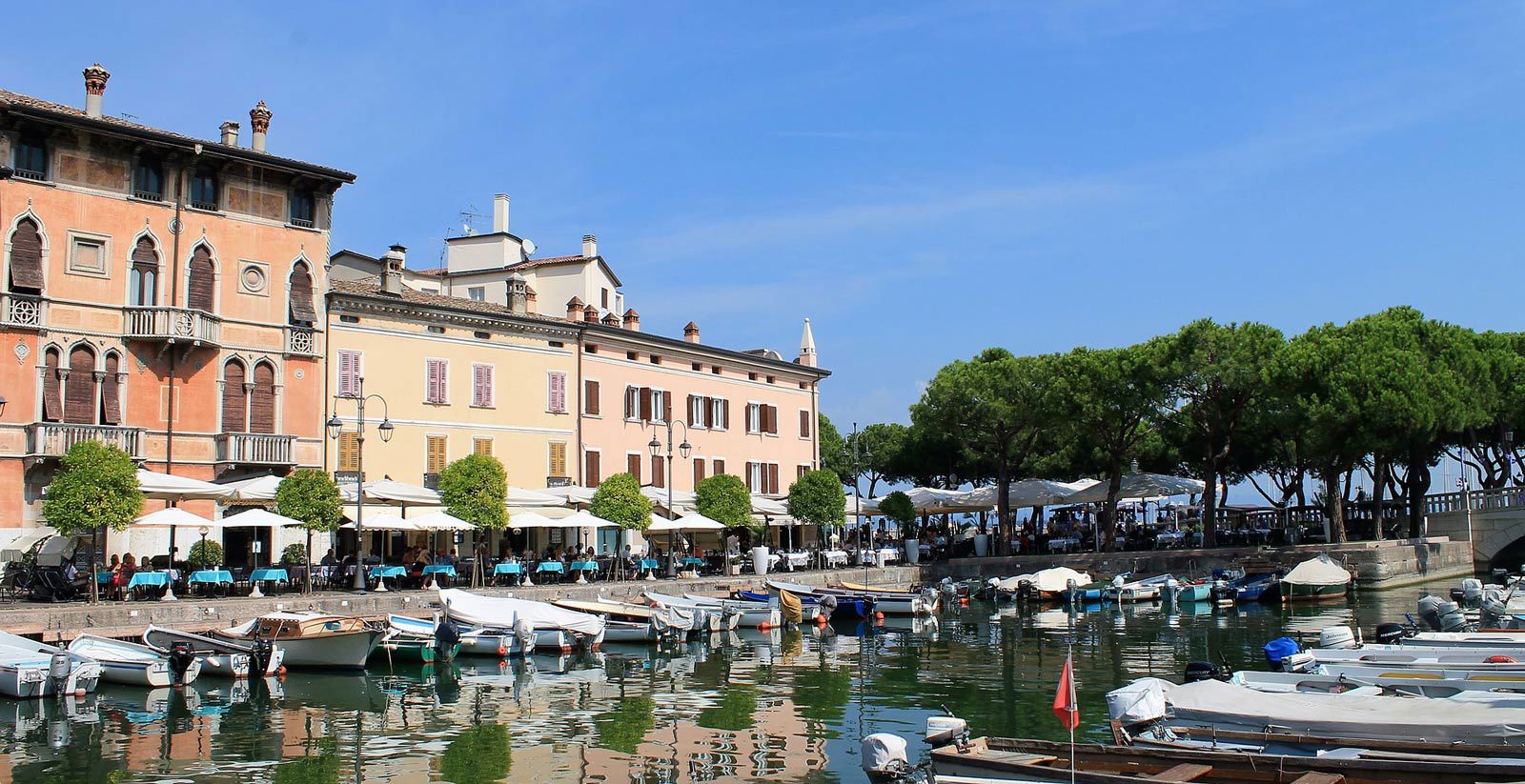Desenzano del Garda
The beautiful town of Desenzano del Garda of about 28,000 inhabitants is located at the southwestern end of Lake Garda. In addition to its splendid landscapes and glimpses of the lake, it offers its visitors many places to visit that tell the story of this territory. Among these we remember: The cathedral, The Roman Villa, The Castle, The Mueso G. Rambotti. The Municipality took on its current name in 1926 when, as part of the reorganization of local administrations, the ancient Municipality of Rivoltella sul Garda (established autonomously at least from the 13th century) was suppressed and the territory of this was aggregated to the neighboring Municipality of Desenzano del Garda. Lake. The Paris - Berne - Milan - Venice - Zagreb railway line, the courier service also extended to Veneto and Trentino, the regular shipping lines on the entire lake, the motorway exit (A4 "Serenissima" motorway) and the proximity the airports of Montichiari and Verona make it a hub of such importance that Desenzano can rightly boast of being considered the "capital of Garda".
Renowned tourist resort, Desenzano is also an interesting starting point for excursions and trips in contact with nature, where sportsmen can practice various activities and those in search of peace can enjoy the silence of nature.
Duomo
Duomo The Cathedral of Desenzano, dedicated to S. Maria Maddalena, was built on the remains of an ancient parish church between 1586 and 1611 on a project by the architect Giulio Todeschini. The façade has Baroque decorative elements, while the interior, with a basilica plan with three naves, is one of the best examples of the late Renaissance in the province of Brescia. Inside, the works of Andrea Celesti stand out, a leading representative of Venetian painting of the '600, including a great "Resurrection" and a pictorial cycle dedicated to St. Mary Magdalene. In the chapel of SS. Sacramento you can admire "The Last Supper", a remarkable work by G.B. Tiepolo from 1738.
Roman Villa
The Roman Villa of Desenzano, which came to light in 1921, is the most important testimony in northern Italy of the great late antique villae. Built at the end of the 1st century BC, it had several phases until the first half of the 4th century AD. The villa overlooked the lake with piers, moorings and perhaps fish ponds for fish farming. The more than 240 square meters of polychrome mosaics of exquisite workmanship represent scenes with harvesting cherubs or running chariots, maenads and satyrs, wild animals, allegories. It is possible that the owner was Flavius Magnus Decentius, brother of the emperor Magnentius, hence the current name of the city.
The Castle
The castle that dominates the city, perhaps built on a Roman castrum to defend the barbarian invasions, was rebuilt in the communal period and strengthened in the 15th century, when it contained 120 houses and a church dedicated to S. Ambrogio. Of the imposing building remain the walls, covered in the perimeter by four towers, and the entrance keep served with the remains of a drawbridge. At the end of the 19th century it was transformed into a barracks, in operation until 1943. The castle is open to the public after the restoration works and the recent recovery of the walls which allows the visit of the patrol walkway and the ascent to the entrance keep. from which you can enjoy one of the most beautiful views of Lake Garda.
Museum
The museum of Desenzano has the main function of offering a wide panorama of the prehistoric cultures that followed in the Benacense region due to its geographical location in an area very rich in evidence of the Bronze Age from the pile-dwelling settlements. The Civic Archaeological Museum of Desenzano del Garda, named after Giovanni Rambotti, was inaugurated in 1990. The idea of establishing an archaeological museum dedicated to the prehistory of Lake Garda had already matured in the early 1980s following the important results achieved with the excavations conducted by Renato Perini at Lavagnone and the sensational discovery of an almost complete plow, dating back to the early Bronze Age.
Other elements of attraction are the Tuesday market: Every Tuesday the central streets of the town are filled with stalls, with many products, from typical products, to ready-made delicacies, and many stalls of clothes and accessories.




